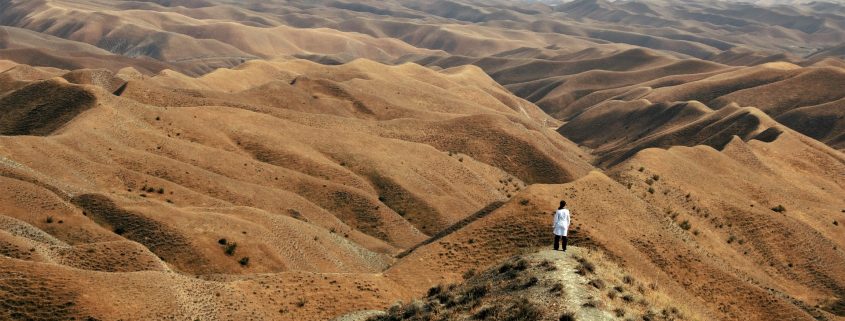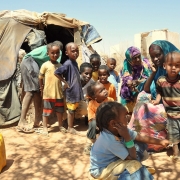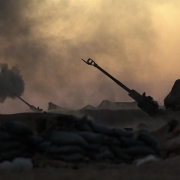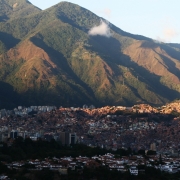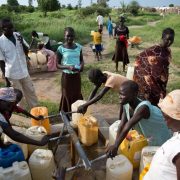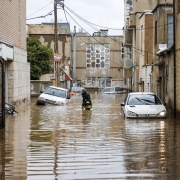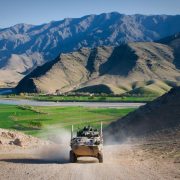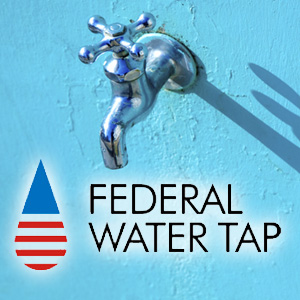HotSpots H2O, February 12: Spotlight on Drought and Unrest in Iran
The Rundown
In late December and early January, Iranians took to the streets, protesting against poor economic conditions, stifling governance, and rampant corruption. In some areas the protests were the latest in a string of demonstrations over deteriorating environmental conditions, a growing concern as prolonged drought plagues Iran.
The country is in the midst of a 14-year dry spell, brought on by a combination of low rainfall and poor water management. The drought drives many Iranians to urban areas in search of often-nonexistent jobs, a pattern similar to the one seen in pre-war Syria. The rapid urbanization exacerbates the country’s water scarcity. Resources are expected to be further depleted as the climate warms. A recent snowstorm in the capital Tehran brought a brief respite from the drought, but the country’s long-term water outlook is bleak.
“We shouldn’t fool ourselves.The snow was heavy, but far from what we need to quench our thirst for water. The drought is still here, and we have a seriously tough year ahead with empty reservoirs and aquifers, and our endless demand for water.” –Kaveh Madani, deputy chief of Iran’s Department of Environment, in reference to an unexpected snow storm which covered large parts of Iran two weeks ago. The snowfall caused widespread excitement in Tehran, where many worried snow would never fall again after years of scarce precipitation.
By The Numbers
96 percent Proportion of Iran that is experiencing a prolonged drought, according to Iranian government meteorological data. (Los Angeles Times)
67 years Length of time since Iran has experienced an autumn as dry as last year’s. Precipitation levels in autumn 2017 were 53 percent below average. (Financial Tribune)
90 percent Amount that Iran’s Lake Urmia has shrunk due to low rainfall and water diversion. Lake Urmia was once the region’s largest saltwater lake. (The New York Times)
12 Number of Iran’s 31 provinces that will deplete their aquifers within the next 50 years, according to analysts. The country’s groundwater depletion rate is among the fastest in the world. (The New York Times)
200 Number of people injured in riots over water diversion in Iran’s Boldaji district, One protester was also killed in the riots, which took place two years ago. The Iranian government has redirected several waterways as part of an attempt to become agriculturally self-sufficient. (Los Angeles Times)
Science, Studies, And Reports
Rising temperatures threaten to further parch Iran’s water supply. Throughout the Middle East, summers are predicted to become 2 to 3 degrees Celsius hotter based on current rates of warming. A 2015 study by the Massachusetts Institute of Technology warned that many major Middle Eastern cities, including Bandar Abbas, Iran, could reach temperatures beyond a “threshold of survivability” if global greenhouse gas emissions are not curbed.
On The Radar
According to government data, Iran will experience a 25 percent decline in surface water runoff by 2030. Rains are also predicted to decline by another 10 percent. At the same time, government response to environmental concerns has been mixed. As part of Iran’s goal to become self-sufficient in food, thirsty crops such as wheat have been generously subsidized in the past, paving the way for today’s extreme groundwater depletion. Several dams have also been constructed in recent years, altering the country’s waterways. If poor water management persists alongside unfavorable weather conditions, water shortages could become a catalyst for further unrest in Iran.
Resources and Further Reading
A long-simmering factor in Iran protests: climate change (Los Angeles Times)
Iranians Prayed for Rain, but Were Covered in Snow (The New York Times)
Iran Drought Here to Stay (Financial Tribune)
Iran’s Water Crisis (Al Jazeera)
Study: Persian Gulf could experience deadly heat (MIT News)
Warming, Water Crisis, Then Unrest: How Iran Fits an Alarming Pattern (The New York Times)
Kayla Ritter is a recent graduate of Michigan State University, where she studied International Relations and Teaching English to Speakers of Other Languages. She is currently based in Manton, Michigan. Kayla enjoys running, writing, and traveling. Contact Kayla Ritter

